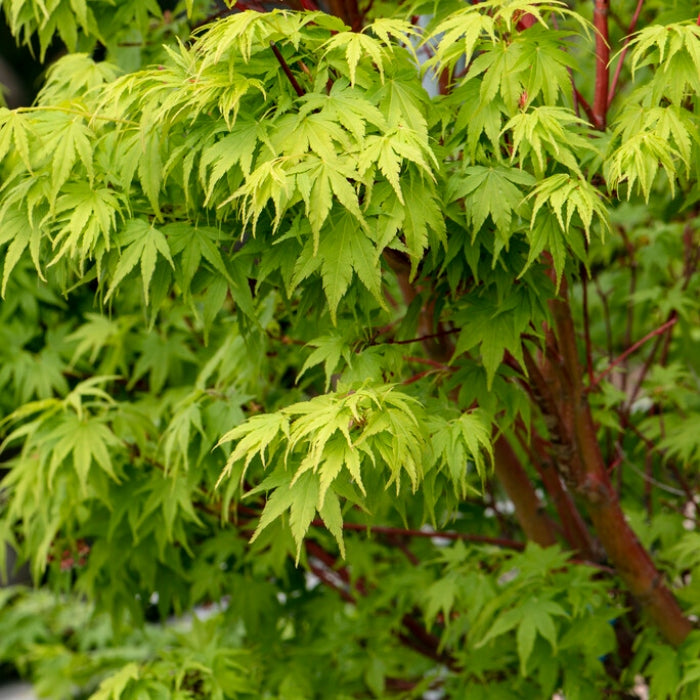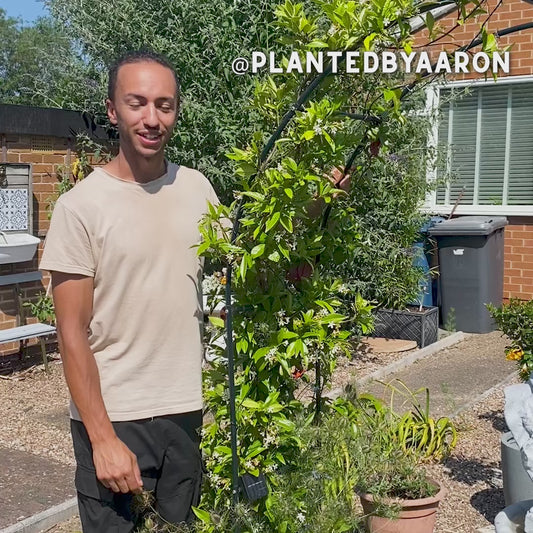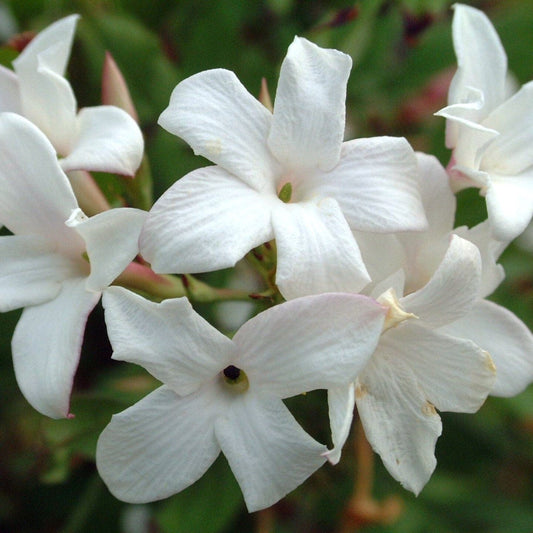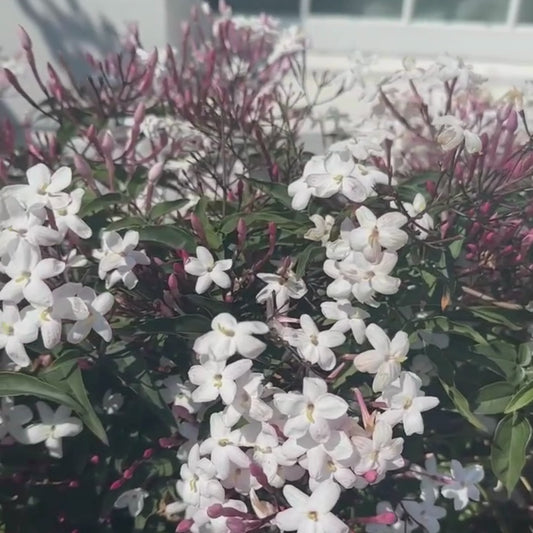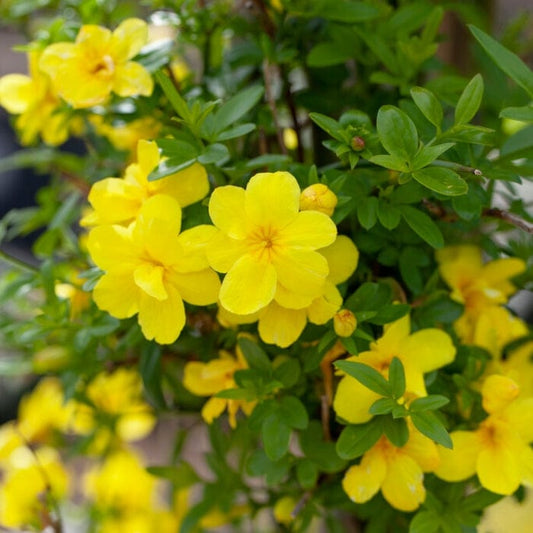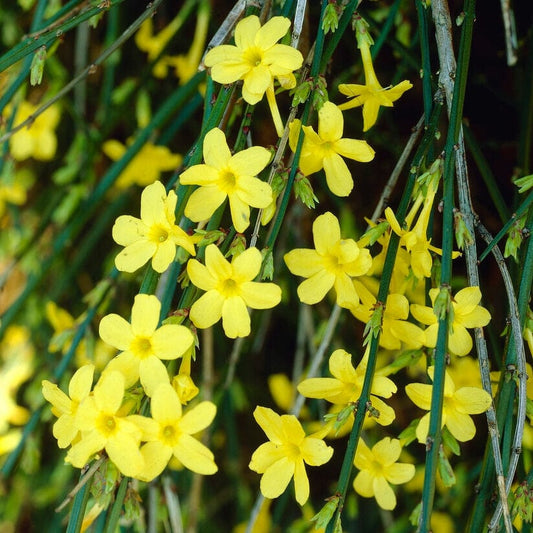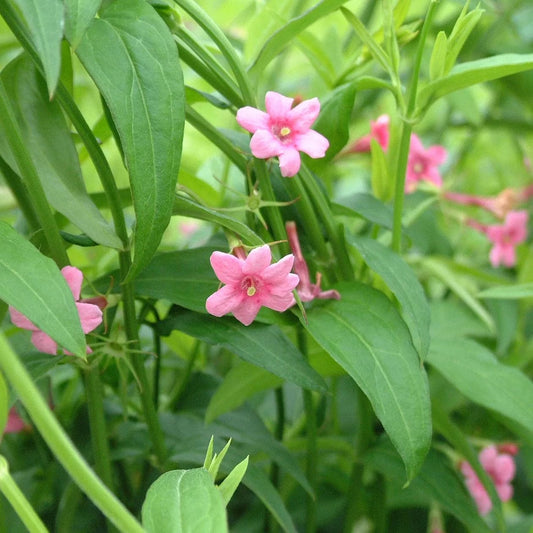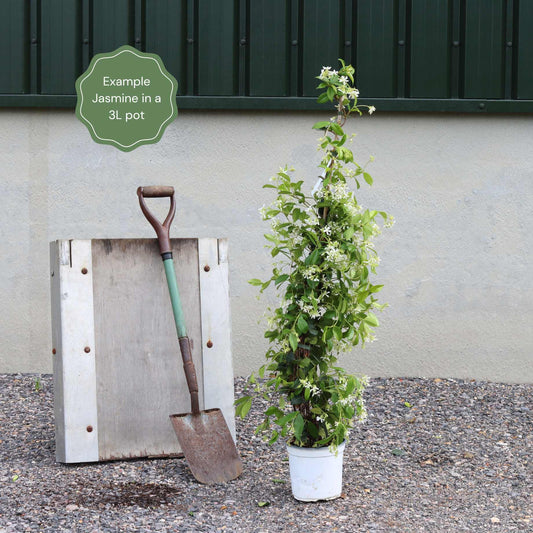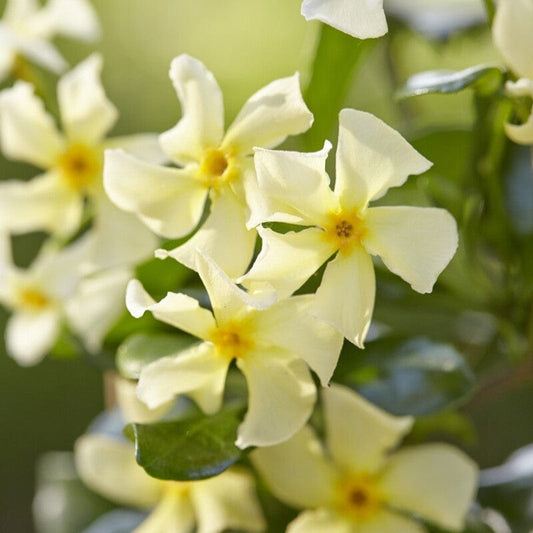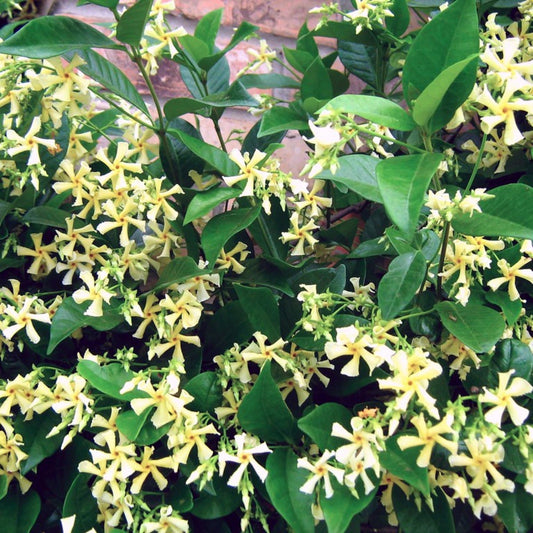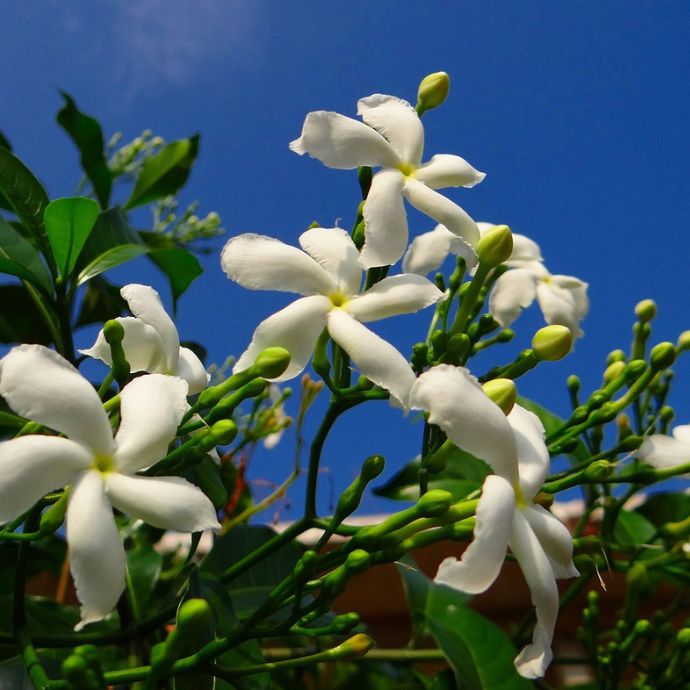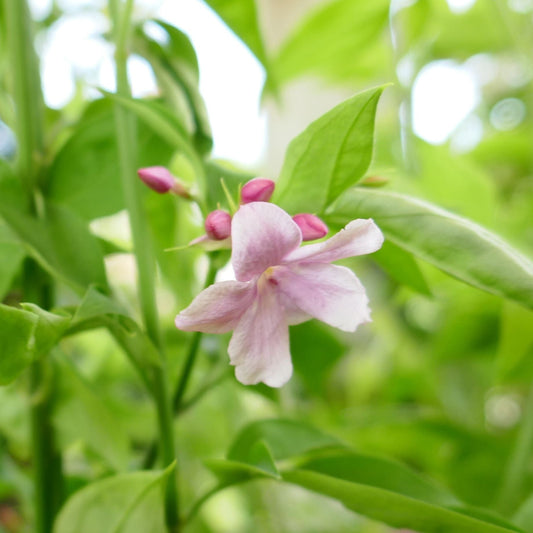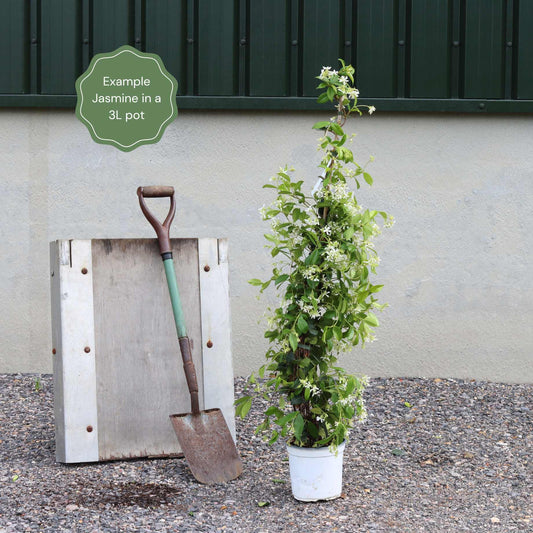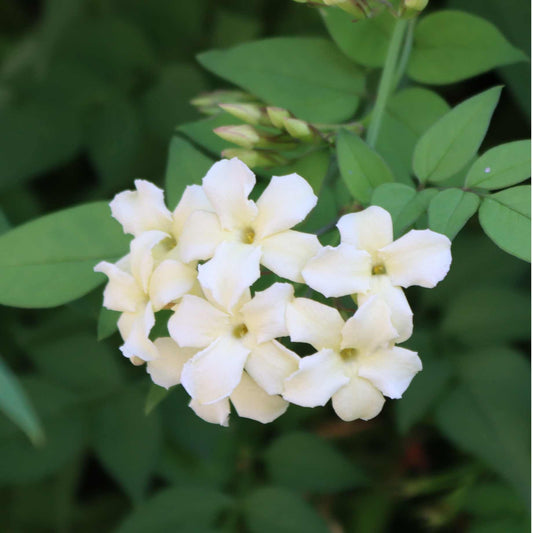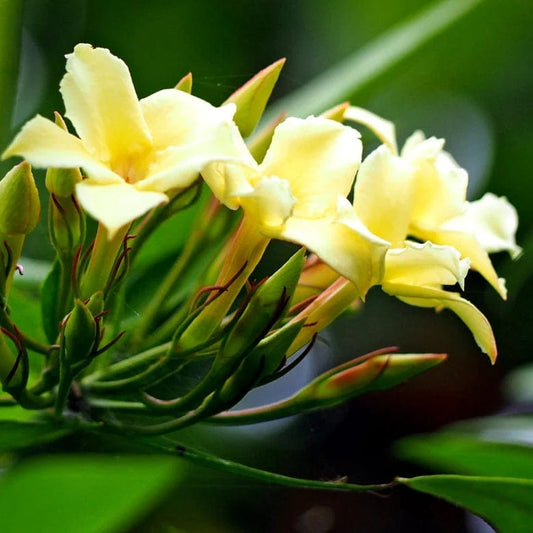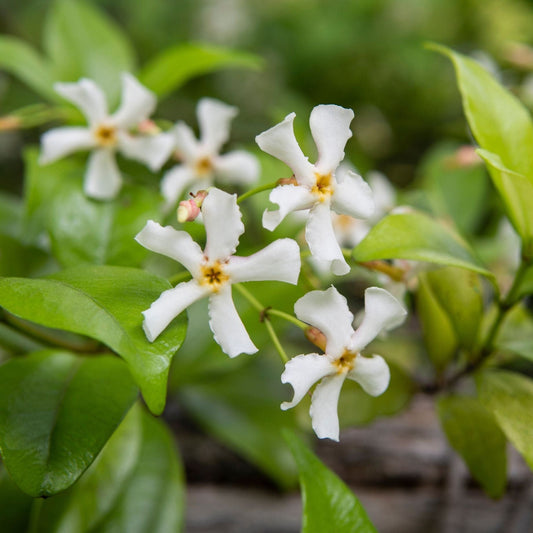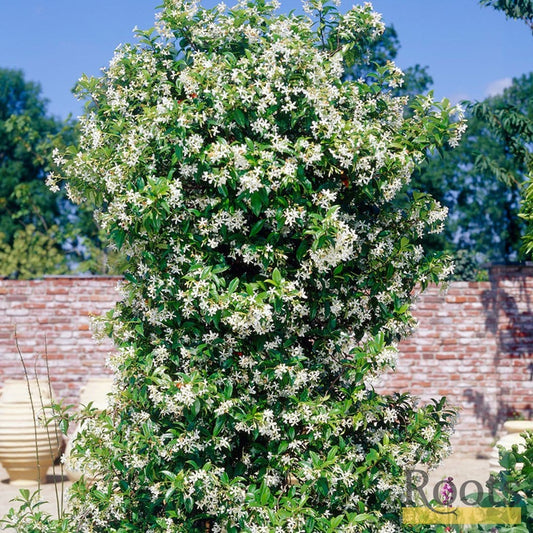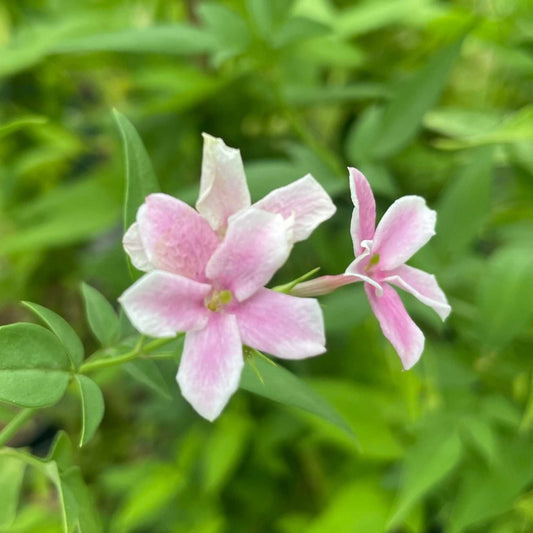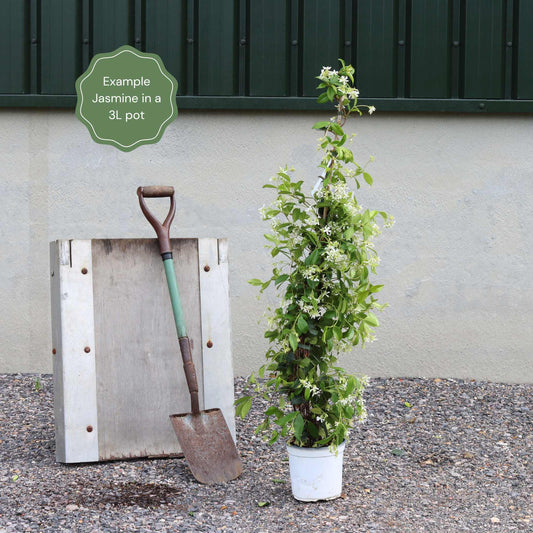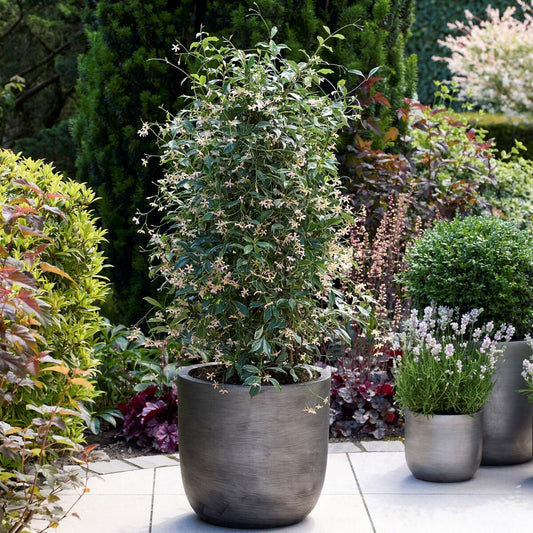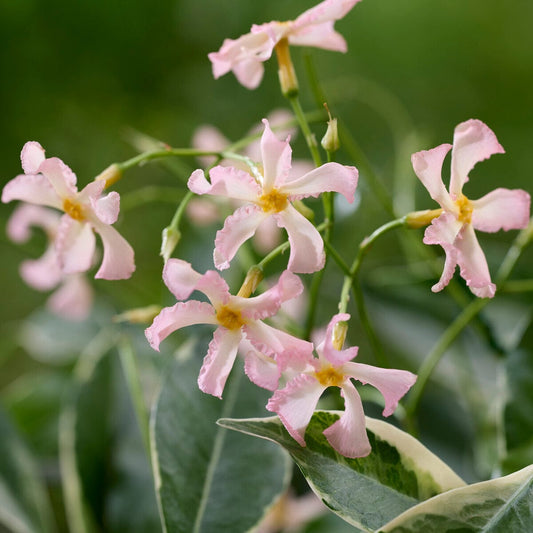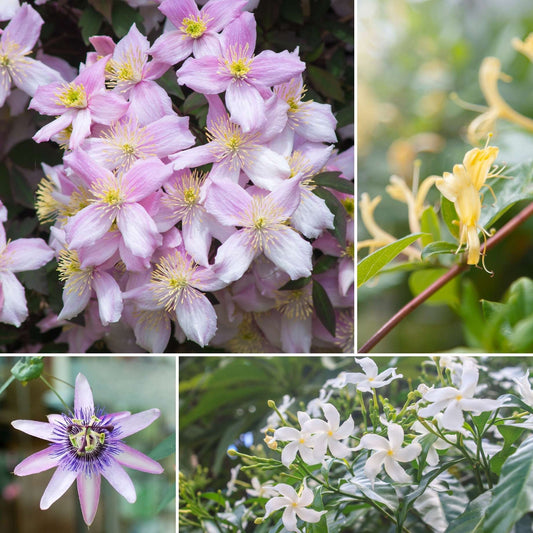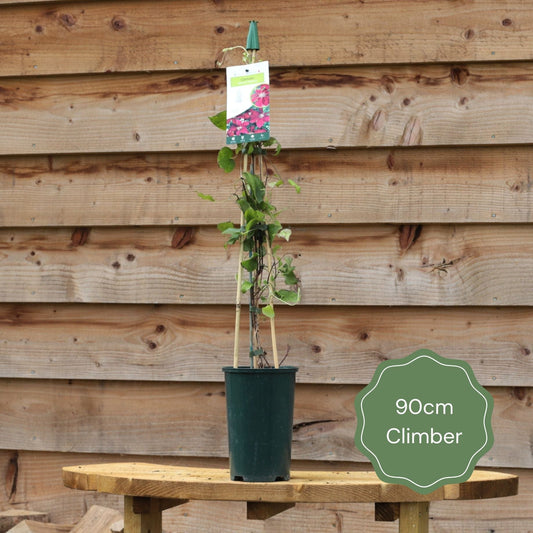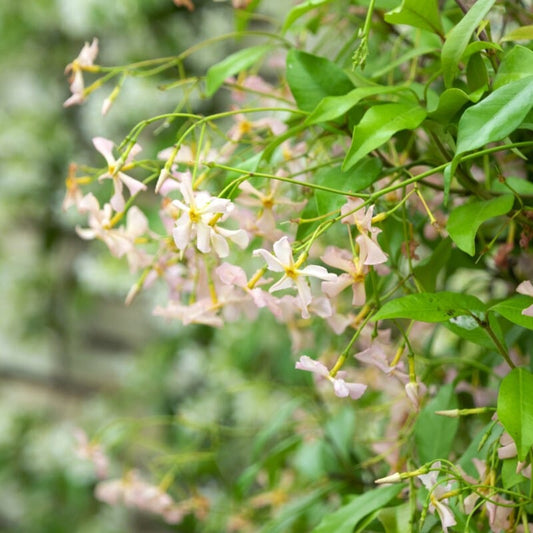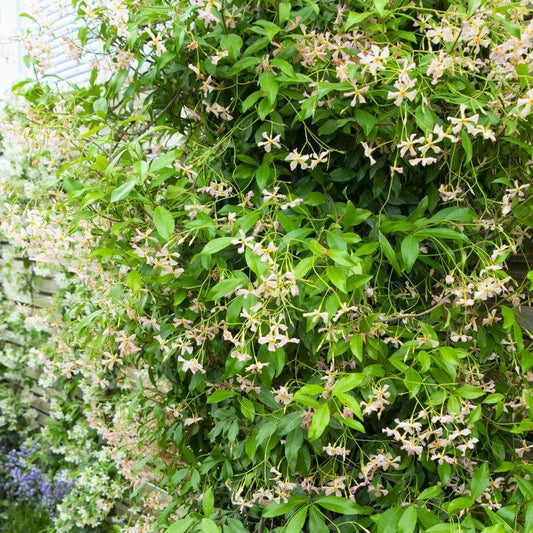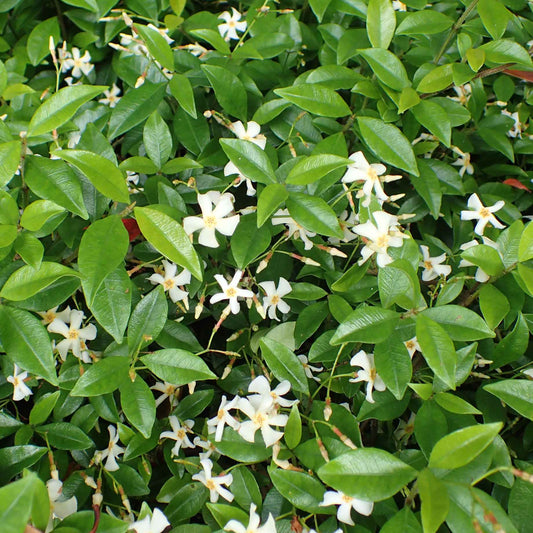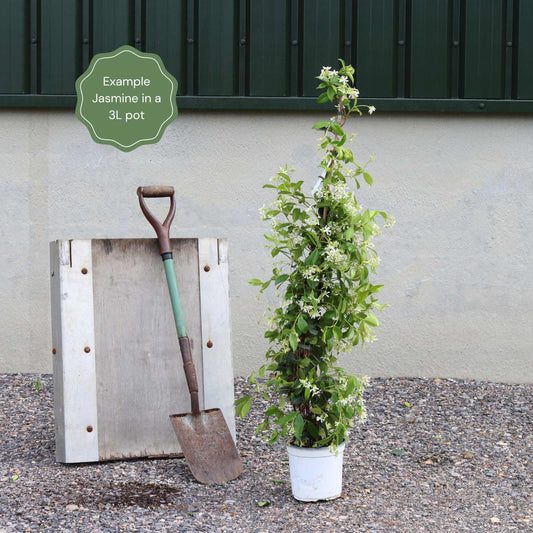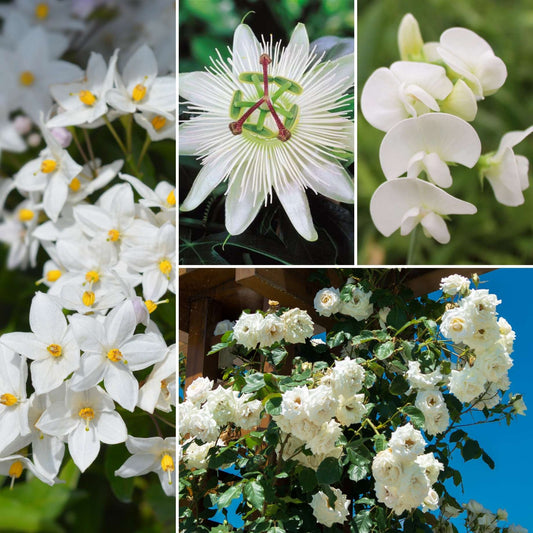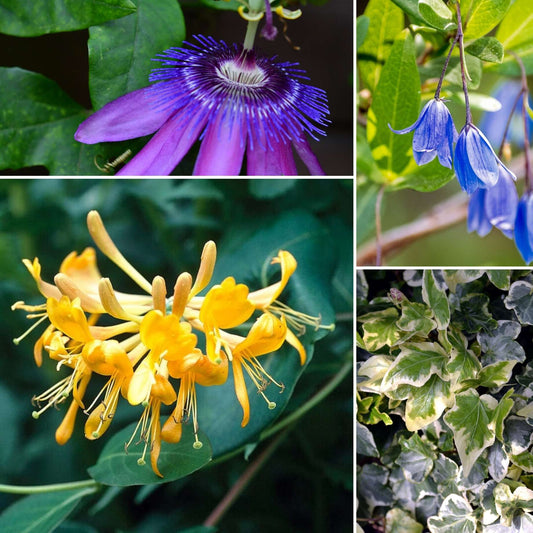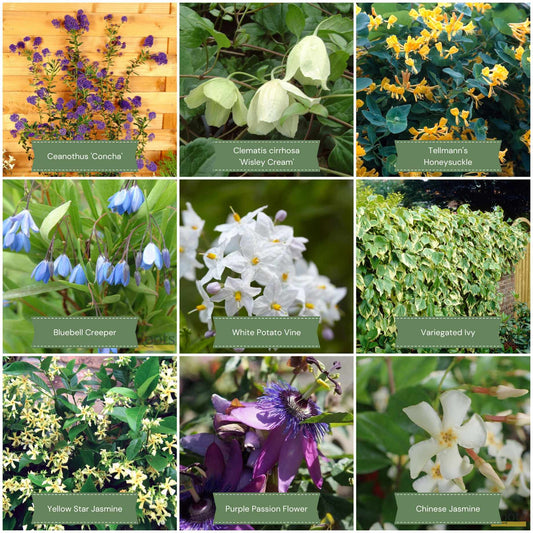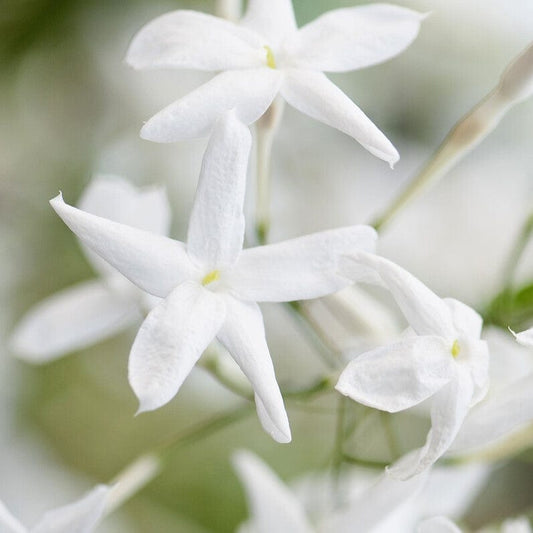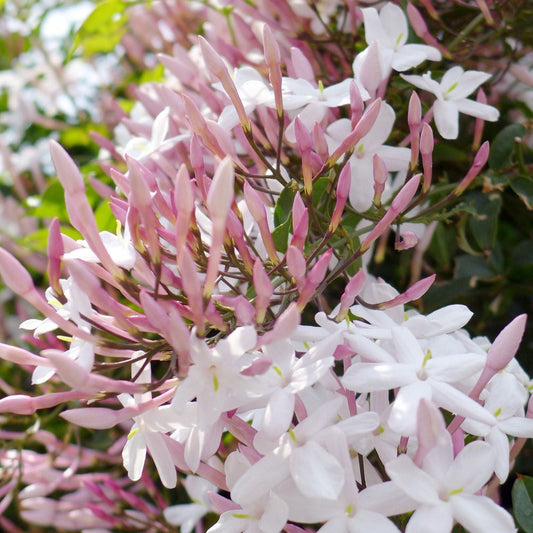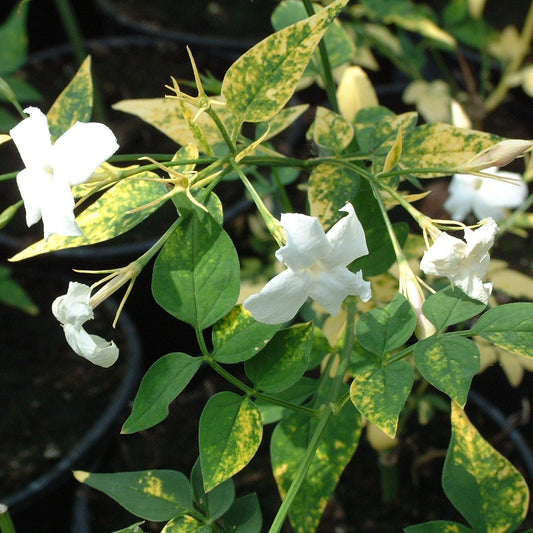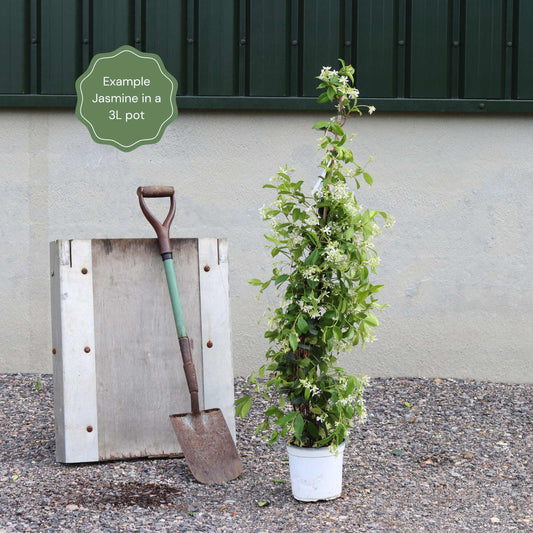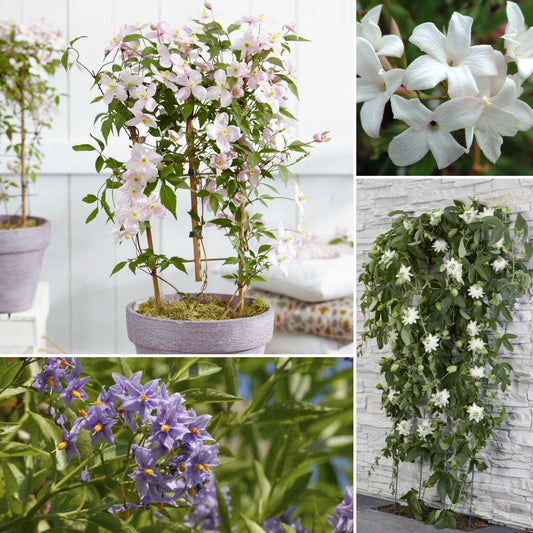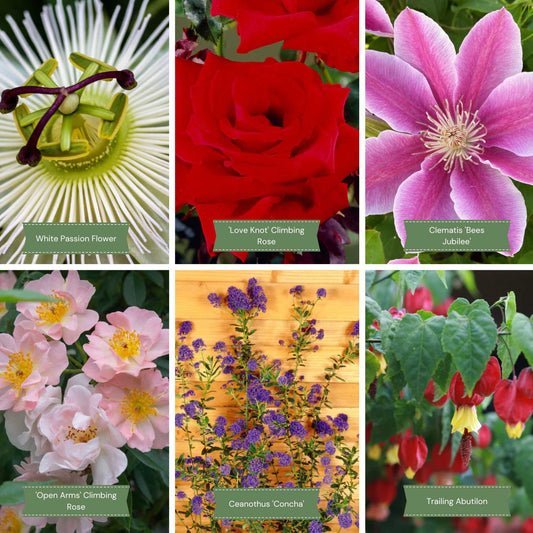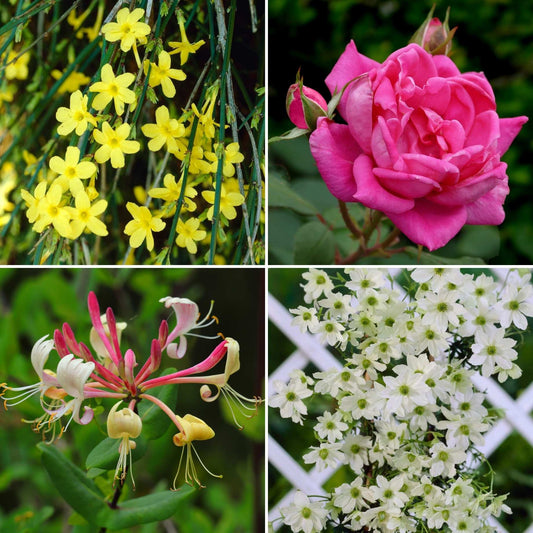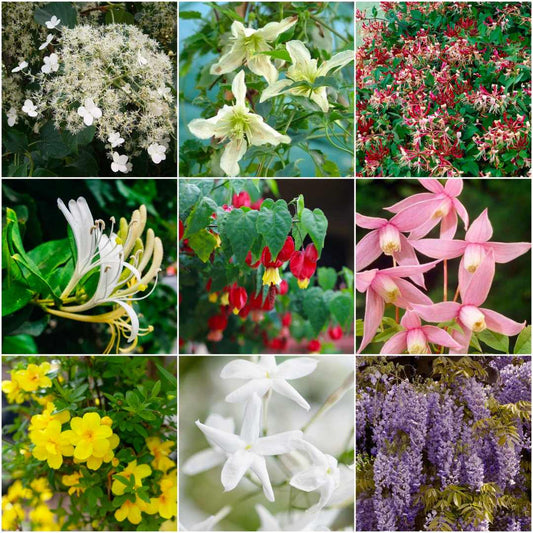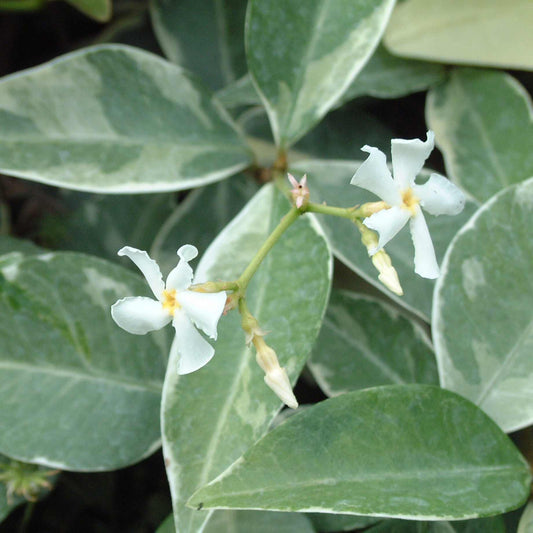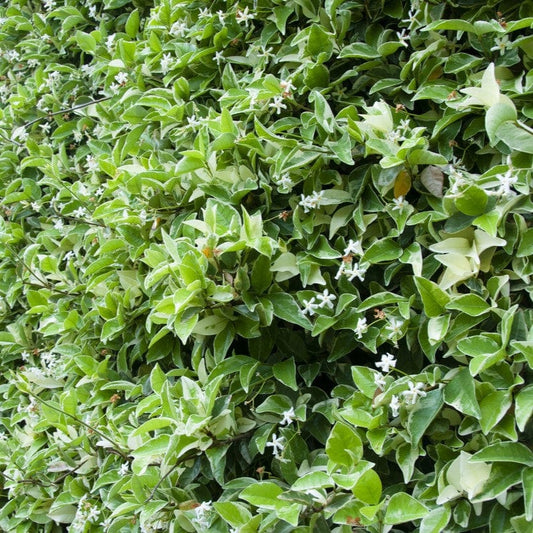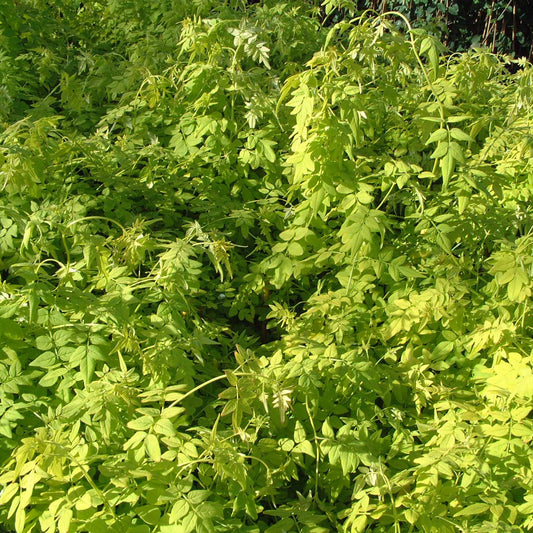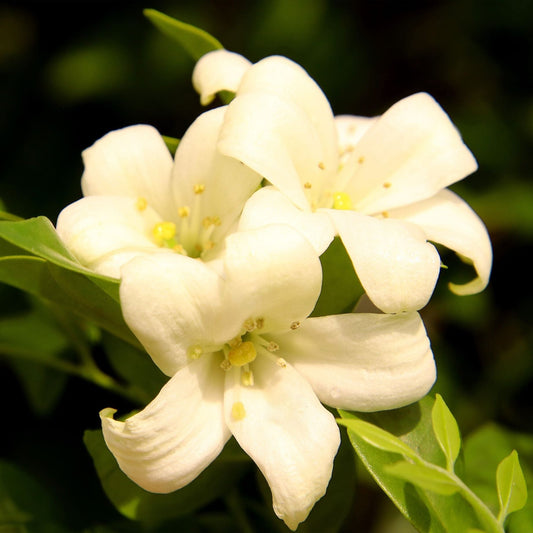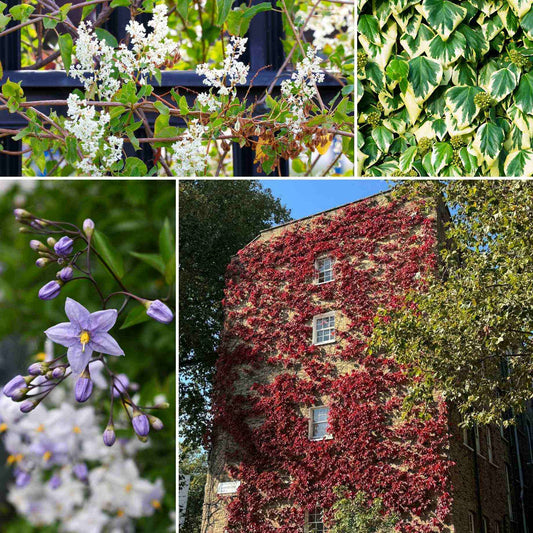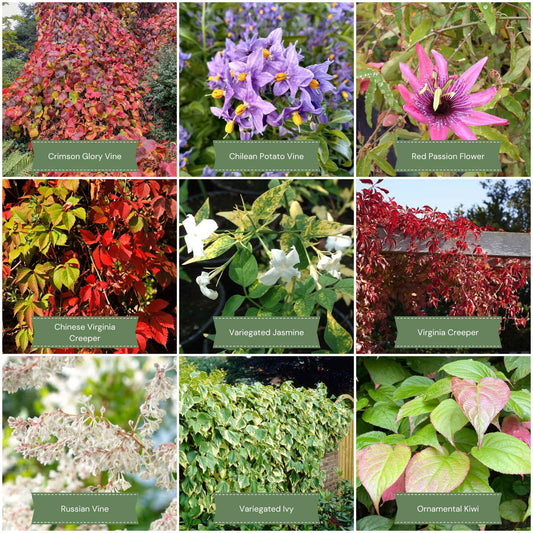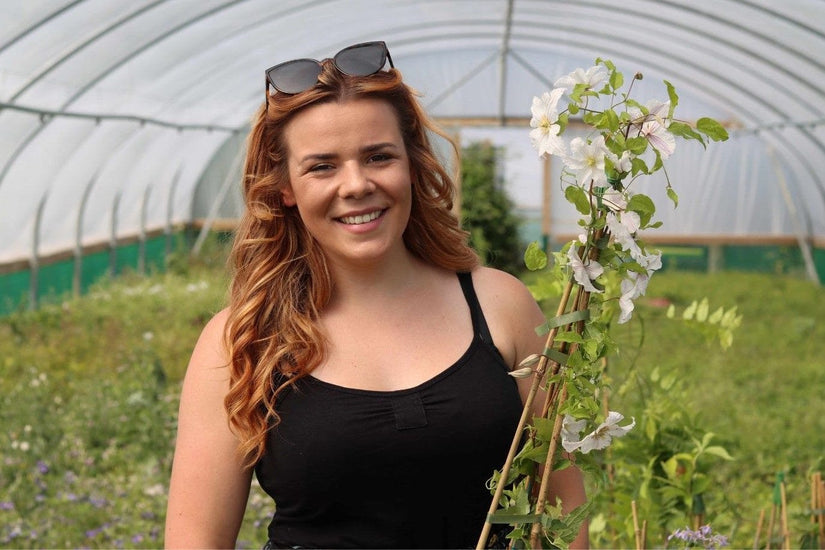Collection: Jasmine Plants
A strong contender for the defining scent of summer, jasmines are hardy, highly-fragrant climbers that bloom in summer (or winter, in the case of Jasminum nudiflorum) with plentiful clusters of white, pink or yellow flowers to attract those all-important pollinators. They're perfect for a pergola or to add a fabulous perfumed element to your seating area.
Need help picking?-
Regular price From £20Regular price
£25Sale price From £20Evergreen Star Jasmine | Trachelospermum jasminoides
The OG for summer scent
- Starry white blooms with notes of vanilla
- Evergreen for year-round interest
- Happy in full sun to partial shade
- Flowers from June to September
5 options available
-
Regular price From £30Regular price Sale price From £30
Common Jasmine | Jasminum officinale
Uncommonly bright and fragrant!
- Linen-white blooms and mid-green leaves
- A twining climber that easily scales a fence
- Happy in full sun and partial shade
- Flowers from June to August
2 options available
-
Regular price From £30Regular price Sale price From £30
Winter Jasmine | Jasminum nudiflorum
What blooms in winter? This guy!
- Lemon-yellow flowers on green stems
- RHS Award of Garden Merit winner
- Happy in both full sun and partial shade
- Flowers from January to March
2 options available
-
Regular price From £30Regular price Sale price From £30
Red Jasmine | Jasminum beesianum
A pink jasmine?!
- Distinctive pink blooms and mid-green leaves
- Semi-evergreen, tolerates light frosts
- Likes full sun (tolerates some shade)
- Flowers from June through July
2 options available
-
Regular price From £30Regular price Sale price From £30
Yellow Star Jasmine | Trachelospermum jasminoides 'Star of Tuscany'
A sky of yellow stars
- Butter-yellow blooms and dark green foliage
- Evergreen with bronze tints in autumn
- Prefers full sun (withstands partial shade)
- Blooms from June to September
2 options available
-
Regular price From £30Regular price Sale price From £30
Stephan Jasmine | Jasminum x stephanense
Fast-growing and fragrant
- Powder pink flowers and dark green leaves
- Fast-growing, vigorous climber
- Likes full sun (grows in partial shade)
- Flowers from June to July
2 options available
-
Regular price From £30Regular price Sale price From £30
Jasmine 'Clotted Cream' | Jasminum officinale
Bigger flowers, better fragrance
- Creamy flowers and deep green foliage
- Stunningly fragrant flowers
- Loves sun (also grows in partial shade)
- Flowers from June through to September
2 options available
-
Regular price From £30Regular price Sale price From £30
Chinese Jasmine | Trachelospermum asiaticum
Abundant summer flower clouds
- Starry white blooms with yellow centres
- RHS Award of Garden Merit winner
- Full sun is preferable (some shade is fine)
- Blooms from June to August
2 options available
-
Regular price From £30Regular price Sale price From £30
'Starry Starry Summer Scent' Jasmine | Jasminum x stephanense
Brilliant bicolour blooms
- Pink and white flowers, mid-green leaves
- Easily covers a tired fence or wall
- Happy in both full sun and partial shade
- Flowers from June to August
2 options available
-
Regular price From £30Regular price Sale price From £30
Pink Star Jasmine | Trachelospermum jasminoides 'Star of Milano'
An explosion of pink stars
- Pastel pink, starry flowers and glossy leaves
- Blooms radiate a heady, tropical aroma
- Prefers sun (tolerates partial shade)
- Abundant pink flowers from June to August
2 options available
-
Regular price From £85Regular price
£90Sale price From £85Ultimate Fragrant Climbing Plants Collection
Sweet scents to lift your mood
- Relax in a garden full of beautiful fragrance
- Enjoy notes of vanilla, grape and violet
- Attract bees and butterflies to your garden
- Flowers all the way from May to September
1 option available
-
Regular price From £30Regular price Sale price From £30
'Pink Showers' Asiatic Jasmine | Trachelospermum asiaticum
Fragrance worth shouting about
- Pink pinwheel flowers, dark green foliage
- Vigorous growth and a wonderful fragrance
- Does well in both sun and partial shade
- Blooms from May to September
2 options available
-
Regular price From £30Regular price Sale price From £30
Asiatic Jasmine | Trachelospermum asiaticum 'Bella'
An evergreen dreamboat
- Creamy flowers and glossy green foliage
- Fabulously fragrant flowers
- Full sun is preferable (or partial shade)
- Flowers from June to August
2 options available
-
Regular price From £85Regular price
£90Sale price From £85White Garden Climbing Plants Collection
Snowy blooms from a height
- A variety of linen-white, showy flowers
- Train your climbers up a wall or obelisk
- Full sun to partial shade (variety dependent)
- Selected for colour, strength and performance
1 option available
-
Regular price From £85Regular price
£90Sale price From £85Evergreen Climbers Collection
Wonderful year-round interest
- Gorgeous foliage and flowers through the year
- Train up a wall, fence, pergola or trellis
- Attract pollinators to your garden
- Enhance privacy and muffle noise
1 option available
-
Regular price From £30Regular price Sale price From £30
White Jasmine | Jasmine polyanthum
Abundant flowers? Not half!
- Glorious clusters of fragrant white blooms
- RHS Award of Garden Merit winner
- Happy in sun (and partial shade)
- Flowers from March to April
Currently out of stock
-
Regular price From £30Regular price Sale price From £30
Variegated Jasmine | Jasminum officinale 'Aureovariegatum'
Glorious gold-flecked foliage
- Fragrant white blooms, yellow-splashed leaves
- Twining climber with a vigorous habit
- Full sun is best (partial shade is tolerated)
- Flowers from June right through to September
Currently out of stock
-
Regular price From £55Regular price
£60Sale price From £55Patio Climbers Collection | Best Climbing Plants for Pots
Perfect for terrace growing
- Elevate your paved outdoor space
- Train up a wall, pergola or grow in a pot
- Beautiful blooms and alluring foliage
- Attract plenty of pollinators
Currently out of stock
-
Regular price From £110Regular price
£120Sale price From £110Year-Round Flowering Climbers Collection
Vibrant flowers all year round
- Fill your garden with non-stop colour
- Easy to grow on a trellis, obelisk or pergola
- Available in three 'editions'
- Blooms throughout the year
Currently out of stock
-
Regular price From £30Regular price Sale price From £30
Variegated Star Jasmine | Trachelospermum jasminoides 'Variegatum'
Starry flowers, splashed foliage
- Star-shaped blooms and cream-flecked leaves
- RHS Award of Garden Merit winner
- Grow in sun or part shade
- Blooms in May and June
Currently out of stock
-
Regular price From £30Regular price Sale price From £30
'Fiona Sunrise' Jasmine | Jasminum officinale
Distinctive yellow-green foliage
- Scented white blooms, chartreuse foliage
- RHS Award of Garden Merit winner
- Suited to full sun and partial shade
- Flowers from June to August
Currently out of stock
-
Regular price From £85Regular price
£90Sale price From £85Fast Growing Climbers Collection
Super-speedy climbers
- An array of climbers with fast growth rates
- Wonderful variety of foliage and flowers
- Cover an ugly wall or fence
- Quickly add privacy to your garden
Currently out of stock
Cheltenham
Meet Mollie
Climbers grown by specialists at the height of their game
What does it take to grow the strongest and best climbing plants in the show tent? Organic fertilisers, natural pest control and years of dedication from Mollie, our expert grower in Worcestershire. Professionally pruned and checked by hand, they’re guaranteed to put on a gold standard display in your garden, too.
Need help picking?

Which jasmine plant should you choose?
The main difference between jasmines is their flowering time. Most bloom throughout summer but winter jasmine is well worth a look, as it provides much-needed colour when little else is in bloom. Some are evergreen, most are white or yellow - but check out red jasmine (actually fuchsia pink) for an unusual take on a classic.

Jasmine planting schemes and partners
Jasmine is a must for planting on a pergola or near a seating area, especially if you use it in the evening, when the scent gets stronger. Its heady fragrance will enhance a Mediterranean planting scheme or add another level to a cottage garden - try teaming it with climbing roses or clematis on a trellis or rambling through a tree.

Growing tips for jasmine plants
Summer jasmines prefer a warm, sheltered spot, but you can plant winter jasmine in slightly shadier, colder areas. They don’t need deep soil, so you can grow them in a pot, supported by a trellis. Soil should be fertile and well-drained, and you can boost your new plant’s flower power by feeding it monthly with a high potassium fertiliser such as tomato feed. Water your jasmine regularly for the first year. After this, you won’t have to water plants in the ground unless the weather is especially hot and dry. Plants in pots should continue to be watered often. Prune your jasmine immediately after flowering, to keep it well-shaped and healthy.
Jasmine FAQs
What kind of jasmine should I grow?
The main difference between jasmines is their flowering time. Most flower during the summer, including the popular Jasminum polyanthum (pink jasmine), and Jasminum officinale (common jasmine), but for a bit of much-needed winter colour, bright yellow Jasminum nudiflorum (winter jasmine) is hard to beat. Many jasmines are also evergreen, giving you year-round interest.
Where should I plant jasmine?
Jasmine does best in a sunny, sheltered position with plenty of natural light, but will also grow well with a little partial shade. Provided it drains well and doesn’t get waterlogged, any soil type is fine. As it’s a very fragrant plant, jasmine is a good choice for planting on a pergola or arch, or near seating areas and paths.
How do I plant jasmine?
Dig a hole twice as wide and deep as your jasmine’s roots, position your plant in the centre and backfill with compost or soil, firming in well. The top of the rootball should be at soil level. Water your plant well and tie it in to the support with plant ties. If you’re planting more than one jasmine, the plants should be spaced according to the level of cover you want. Space them roughly a metre apart, or for a denser level of cover, 45-50cm.
How often should I water jasmine?
Water your jasmine plant regularly for the first year - after this, plants in the ground should be fine with rainwater unless the weather is very hot or dry, but plants in pots should continue to be watered regularly.
Do jasmine plants need fertiliser?
Feeding your jasmine plant can help it achieve its full flowering potential. Apply a general purpose slow release fertiliser annually in the spring, then feed your plant with high-potassium fertiliser monthly throughout spring and summer - tomato feed is good!
How do I prune jasmine?
Prune your jasmine plant every year after flowering to keep it in shape and remove any dead or damaged branches. Pinch back the tips of the vines regularly to encourage bushier growth and more flowers.
How do I support jasmine vines?
Jasmine is a twining climber and will wind itself around any structure. Good supports for jasmine include obelisks, arches and pergolas. It will also cover a wall or fence with support from horizontal wires or a trellis. It won’t need much training once it’s established. All you need to do is to guide the young plant by tying in its stems until it’s grown enough to do this for itself.
When do jasmine plants bloom?
Most jasmine plants are summer blooming and will be in flower typically throughout June and July. Others, such as Jasminum polyanthum, bloom in spring from March to April, or from January to March (like Jasminum nudiflorum).
Will jasmine grow in a pot?
Jasmine plants don’t have especially deep roots, so they thrive in pots. Plant them at the base of a pergola or trellis and train them upwards with wires or twine. A freestanding obelisk or trellis placed in the pot also works well and is better if you want to move the pot at any time.
Happy plants make happy customers
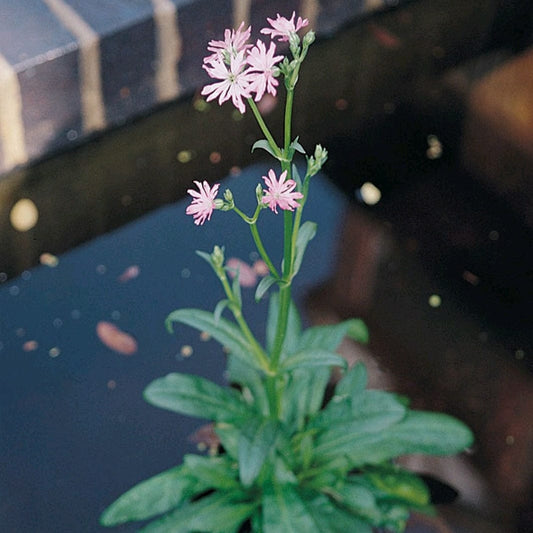
Plants arrived in great condition and very promptly. Well established - much better than the ones I got at my local garden centre.
Monica Spence
| 24 May
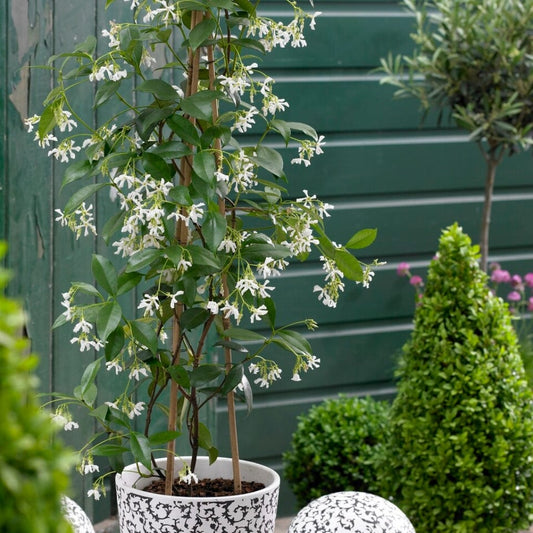
Yet again this company delivered good healthy plants, exactly as shown in photos, well packaged and within delivery time quoted. Recommend!
Jacqueline Burgess
| 2 Jun
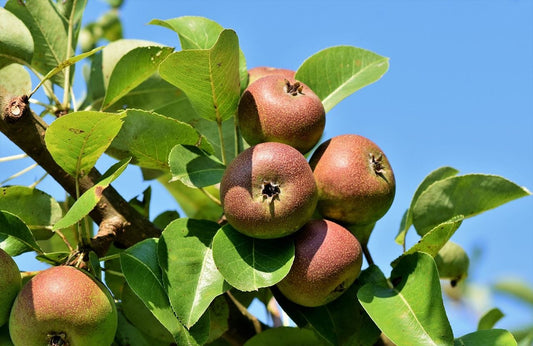
I continue to be so impressed with Roots. Their customer care, knowledge of their subject: from planting hedges to pruning roses and more, has been a great support.
Judy Lane
| 23 Oct
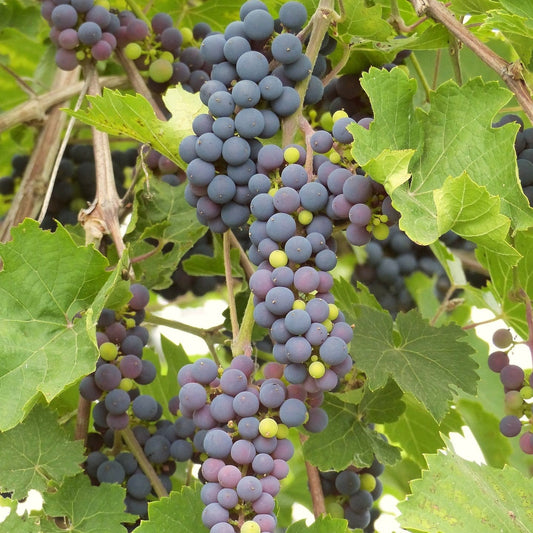
The plant arrived looking vigorously healthy, which brings a smile to your face, extremely well protected in its packaging.
Martyn Hill
| 5 Jul
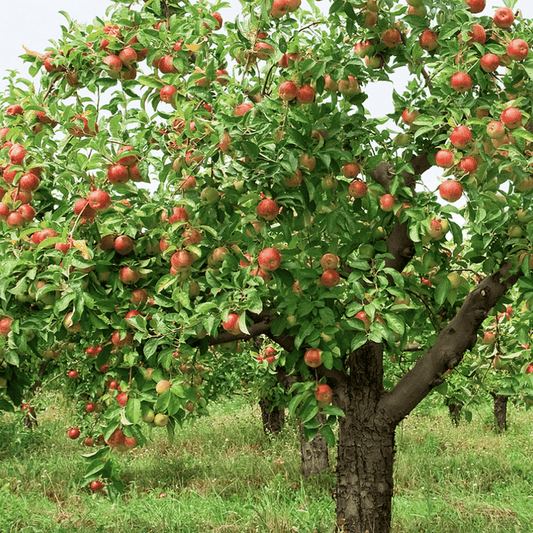
As a non-gardener, I found my whole experience brilliant. Great information & advice available on the website, great range of products & prices are brilliant.
John-Paul
| 22 May

Wonderful plants and great customer service... really surprised to find that the plants are better than those you would get at your local garden centre.
Gavin Wilcock
| 8 Nov
Fighting plastic waste
Delivering fresh from the nursery
Supporting UK growers
